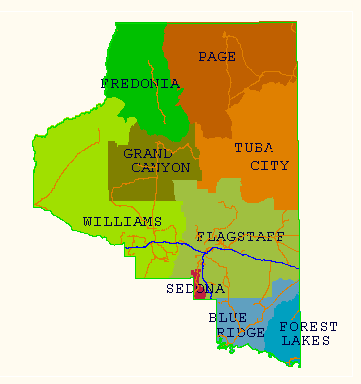 Sedona AZ (May 16, 2015) – The Coconino County Sheriff’s Office and the Coconino County Emergency Management Division will present a three day Community Emergency Response Team (CERT) training class at the Page Public Safety Facility, 808 Coppermine Road in Page, Arizona. More than fifty CERT classes have been held in urban, rural and reservation communities throughout Coconino County.
Sedona AZ (May 16, 2015) – The Coconino County Sheriff’s Office and the Coconino County Emergency Management Division will present a three day Community Emergency Response Team (CERT) training class at the Page Public Safety Facility, 808 Coppermine Road in Page, Arizona. More than fifty CERT classes have been held in urban, rural and reservation communities throughout Coconino County.
CERT Classes are offered by CCSO and, upon successful completion of the training, each participant will receive a Community Emergency Response Basic Certification and a back pack that contains a reflective vest, hard hat, eye protection, gloves, a Four in One tool, and a CERT Field Response Guide, all basic community emergency First Responder gear.
Successful participants will be invited to join a team in Coconino County and will receive additional in-service training to assist community First Responders during Emergency and Non-Emergency events. CERT Team members in Flagstaff now meet monthly for additional training.
CERT Volunteers have been utilized during responses to Wild Land Fires, Flooding, Tornados, Heavy Snow Storms, and many other natural disasters. CERT Volunteers have served in a variety of capacities including staffing road blocks, assisting with neighborhood evacuation notification, staffing joint information call centers, assisting with Incident Command Centers, distributing neighborhood safety information, and many other areas of need.
Community members wanting more CERT information and or to register for the Page basic training class are encouraged to call the Community Programs Office of the Coconino County Sheriff’s Office at 928-226-5089 or Lieutenant Bret Axlund at (928) 679-8705.
Following a major disaster, first responders providing fire and medical services may not be able to meet the demand. Factors such as the number of victims, communication failure, and road blockages will prevent people from accessing emergency services they have come to expect through 911. People will need to rely on each other for help, in order to meet their immediate lifesaving and life sustaining needs.
Under these conditions, it is expected that family members, fellow employees, and neighbors will automatically try to help each other. This was the case following the Mexico City earthquake where untrained, spontaneous volunteers saved 800 people. However, 100 people lost their lives while attempting to save others. This is a high price to pay and is preventable through training.
If we can predict that Emergency Services will not meet immediate needs following a major disaster, especially if there is no warning like a wild fire, and knowing people will spontaneously volunteer, what can the Coconino County Sheriff’s Office do to prepare citizens for this eventuality?
- Citizens should be aware of the facts — 1) about what to expect following a major disaster in terms of immediate services and, 2) given the message about their own responsibilities for mitigation and preparedness, and 3) trained in the areas of needed lifesaving skills with emphasis on decision-making skills, rescuer safety, and doing the greatest good for the greatest number. Finally, they must organize into teams so that they are an extension of First Responder services offering immediate help to victims until professional services arrive.
Basic CERT Training addresses the following areas:
Session I – DISASTER PREPAREDNESS: Addresses hazards to which people are vulnerable in their community. Materials cover actions that participants and their families take before, during, and after a disaster.
Session II – DISASTER FIRE SUPPRESSION: Briefly covers fire chemistry, hazardous materials, fire hazards, and fire suppression strategies. However, the thrust of this session is the safe use of fire extinguishers, sizing up the situation, controlling utilities, and extinguishing a small fire.
Session III – DISASTER MEDICAL OPERATIONS PART I: Participants practice diagnosing and treating airway obstruction, bleeding, and shock by using simple triage and rapid treatment techniques.
Session IV – DISASTER MEDICAL OPERATIONS, PART II: Covers evaluating patients by doing a head to toe assessment, establishing a medical treatment area, performing basic first aid, and practicing in a safe and sanitary manner.
Session V – LIGHT SEARCH AND RESCUE OPERATIONS: Participants learn about search and rescue planning, size-up, search techniques, rescue techniques, and most importantly, rescuer safety.
Session VI – DISASTER PSYCHOLOGY AND TEAM ORGANIZATION: Covers signs and symptoms that might be experienced by the disaster victim and worker. It addresses CERT organization and management principles and the need for documentation.
Session VII – COURSE REVIEW AND DISASTER SIMULATION: Participants review answers from a take home examination. Finally, they practice skills learned during the previous six sessions in disaster activity.
The most important aspect of the CERT Training are the people who freely give valuable time to receive lifesaving information, not just for themselves, but for their families, neighbors and community members. Many CERT Volunteers go on to receive additional training and stand ready to assist First Responders whenever the call goes out.
The training class begins on Friday, May 29, 2015, from 6- 9:00 p.m., and continues Saturday, May 30, 2015, from 8 – 5:00 p.m., and Sunday, May 31, 2015, from 8 – 5:00 p.m., and is offered to all community members free of charge.

Read www.SedonaEye.com for daily news and interactive views!

